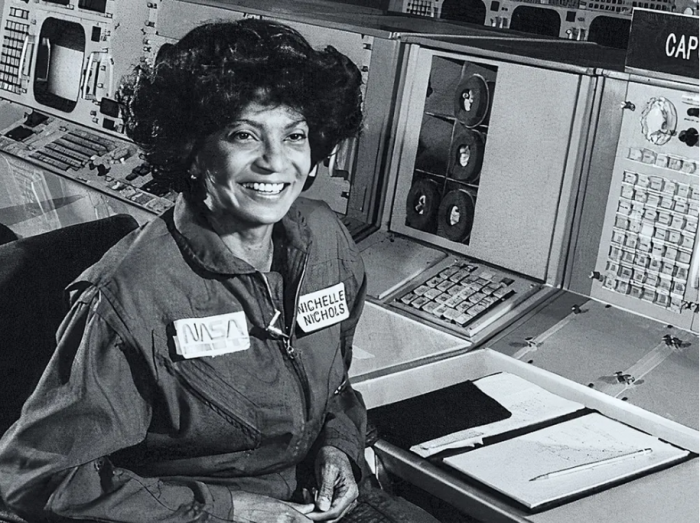The Unsung Heroines of American History
Even before it has a home on the Mall, the Smithsonian American Women’s History Museum is sharing stories of overlooked pioneers.
One of the fondest memories I have from my time as an educator at the National Air and Space Museum is meeting Nichelle Nichols, whose role as Lieutenant Uhura on “Star Trek” served as a model for girls and women of color. Her influence was so great that Martin Luther King Jr. implored her to stay on when she considered quitting after the show’s first season. She not only stayed, but also went on to recruit women and minority applicants for NASA’s space shuttle program, continuing a lifetime of inspiring others to boldly go where no one had gone before.

Nichelle Nichols, known for her role on “Star Trek,” later starred in a 1977 recruitment video for NASA aimed at women of color. NASA
There are so many of those stories, from the suffragists who fought to secure the vote for women, to workers’ rights advocate Frances Perkins whom we can thank for our weekends, to women activists continuing to seek environmental justice. Unearthing these accounts and examining women’s lived experiences is at the heart of the forthcoming Smithsonian American Women’s History Museum. Even with no building to house it yet, the museum is already helping recalibrate the American story by showcasing women’s accomplishments and perspectives.
In March 2024, the museum launched its first digital exhibition, “Becoming Visible: Bringing American Women’s History Into Focus.” Why do we connect the polio vaccine to Jonas Salk but not Isabel Morgan, the virologist who first tested the vaccine in monkeys? Why is Japanese American painter Hisako Hibi lesser known than her contemporary Edward Hopper? “Becoming Visible” invites us to consider why women’s stories and contributions have often disappeared from narratives about our past.
As the museum takes shape, its efforts to help the Smithsonian prioritize women’s history are as impressive as they are prolific. The museum administers a federal fund that has provided more than $13 million to 29 Smithsonian units to elevate women’s history across the Institution.
In March, the museum will debut its Discoverability Lab, an online innovation hub for historians, data scientists and the public. The lab’s research into machine learning, new scholarly methods and crowdsourcing will help make women’s stories easier to find online and in historical collections. And to celebrate the nation’s 250th birthday in 2026, the oral history and education project “We Do Declare: Women’s Voices on Independence” explores women’s push for equality through an economic lens.
Women’s History Month is a good time to highlight women’s contributions to what the nation is and what it might become, and the Smithsonian’s duty to tell these stories does not end with the month. It continues year-round. The Smithsonian American Women’s History Museum has already taken us at warp speed on our voyage to explore women’s courage, strength and ingenuity.
This post was originally published by the Smithsonian magazine blog, Smithsonian Voices. Copyright 2024 Smithsonian Institution. Reprinted with permission from Smithsonian Enterprises. All rights reserved. Reproduction in any medium is strictly prohibited without permission from Smithsonian Institution.
Posted: 13 February 2025




